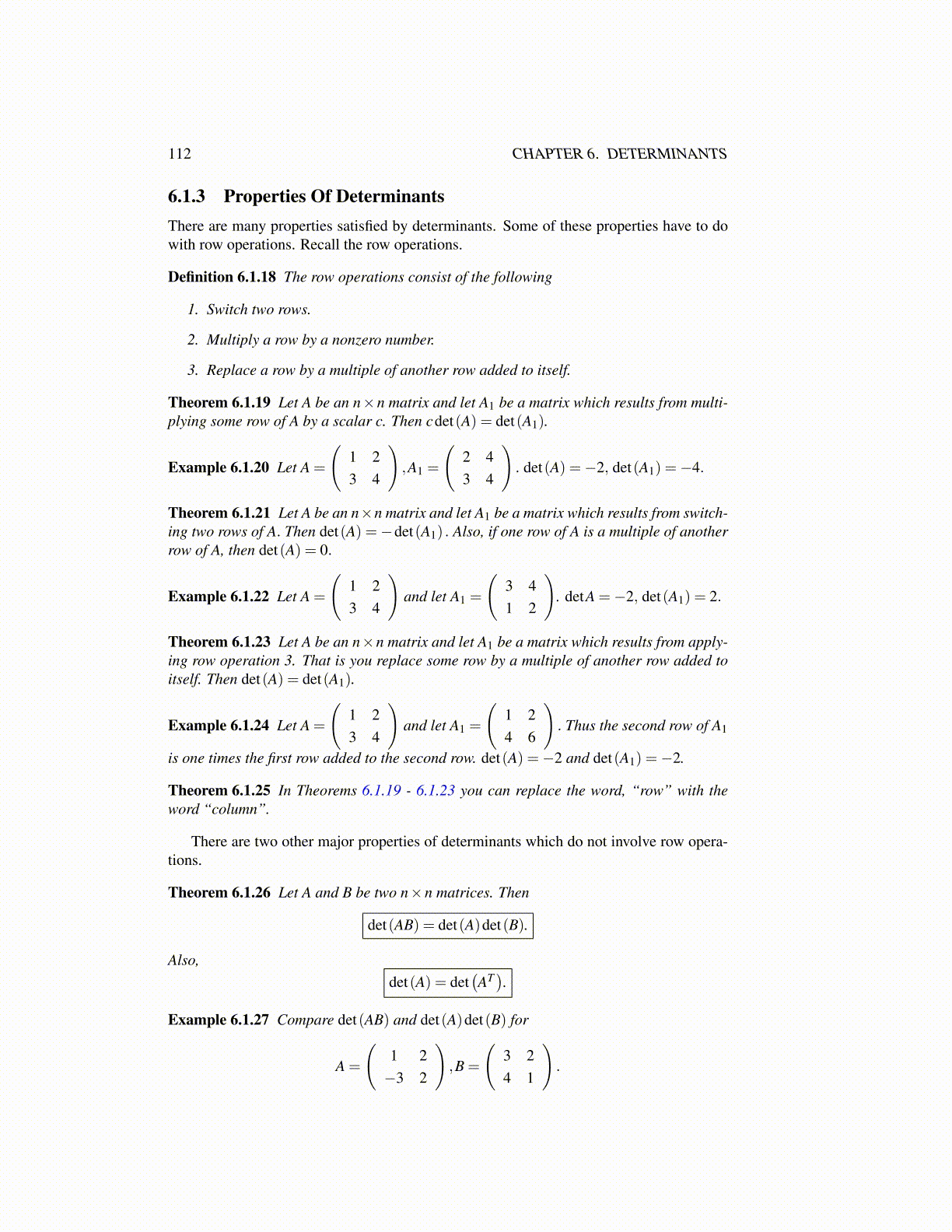
112 CHAPTER 6. DETERMINANTS
6.1.3 Properties Of DeterminantsThere are many properties satisfied by determinants. Some of these properties have to dowith row operations. Recall the row operations.
Definition 6.1.18 The row operations consist of the following
1. Switch two rows.
2. Multiply a row by a nonzero number.
3. Replace a row by a multiple of another row added to itself.
Theorem 6.1.19 Let A be an n×n matrix and let A1 be a matrix which results from multi-plying some row of A by a scalar c. Then cdet(A) = det(A1).
Example 6.1.20 Let A =
(1 23 4
),A1 =
(2 43 4
). det(A) =−2, det(A1) =−4.
Theorem 6.1.21 Let A be an n×n matrix and let A1 be a matrix which results from switch-ing two rows of A. Then det(A) =−det(A1) . Also, if one row of A is a multiple of anotherrow of A, then det(A) = 0.
Example 6.1.22 Let A =
(1 23 4
)and let A1 =
(3 41 2
). detA =−2, det(A1) = 2.
Theorem 6.1.23 Let A be an n×n matrix and let A1 be a matrix which results from apply-ing row operation 3. That is you replace some row by a multiple of another row added toitself. Then det(A) = det(A1).
Example 6.1.24 Let A =
(1 23 4
)and let A1 =
(1 24 6
). Thus the second row of A1
is one times the first row added to the second row. det(A) =−2 and det(A1) =−2.
Theorem 6.1.25 In Theorems 6.1.19 - 6.1.23 you can replace the word, “row” with theword “column”.
There are two other major properties of determinants which do not involve row opera-tions.
Theorem 6.1.26 Let A and B be two n×n matrices. Then
det(AB) = det(A)det(B).
Also,det(A) = det
(AT).
Example 6.1.27 Compare det(AB) and det(A)det(B) for
A =
(1 2−3 2
),B =
(3 24 1
).